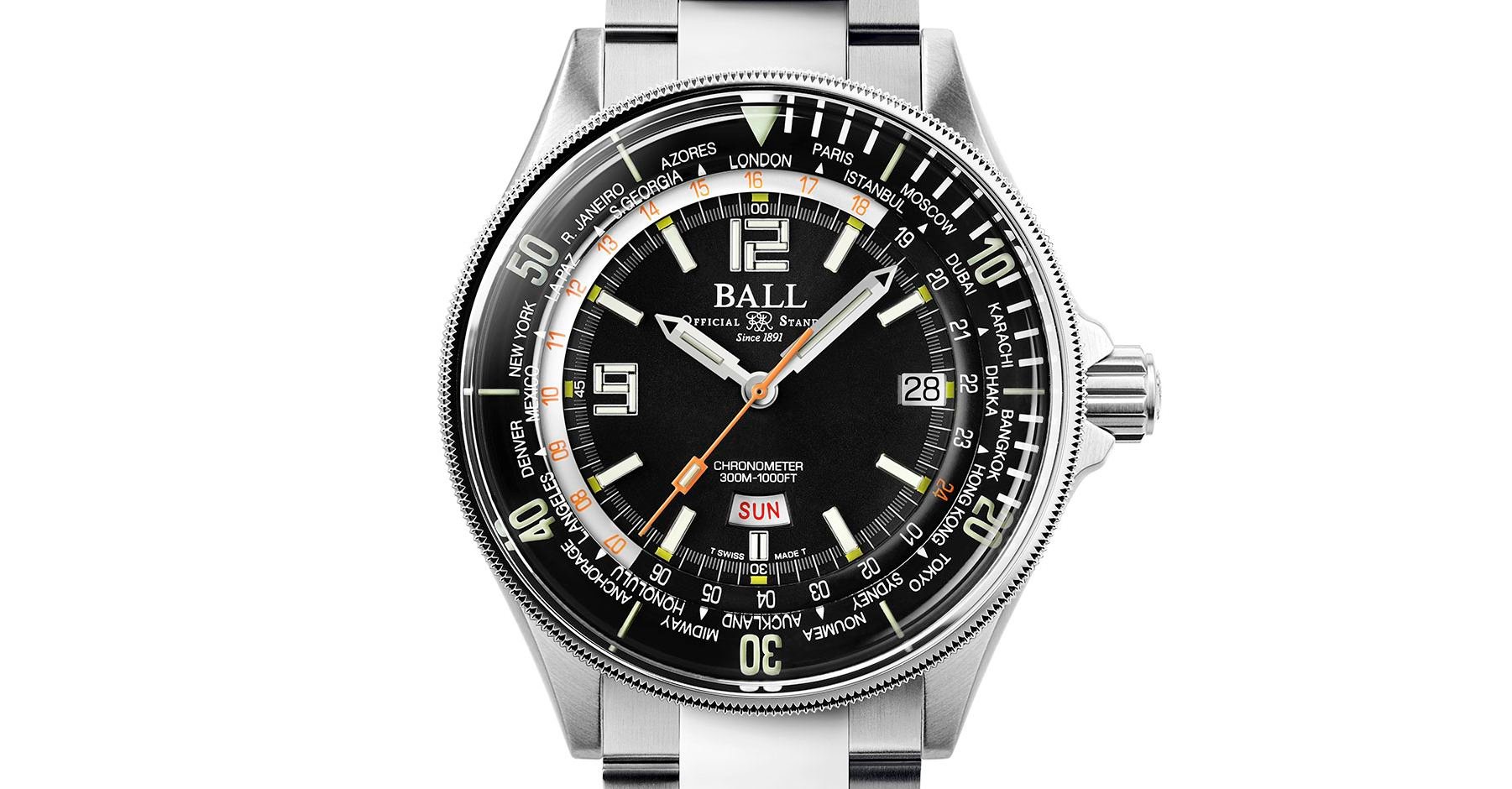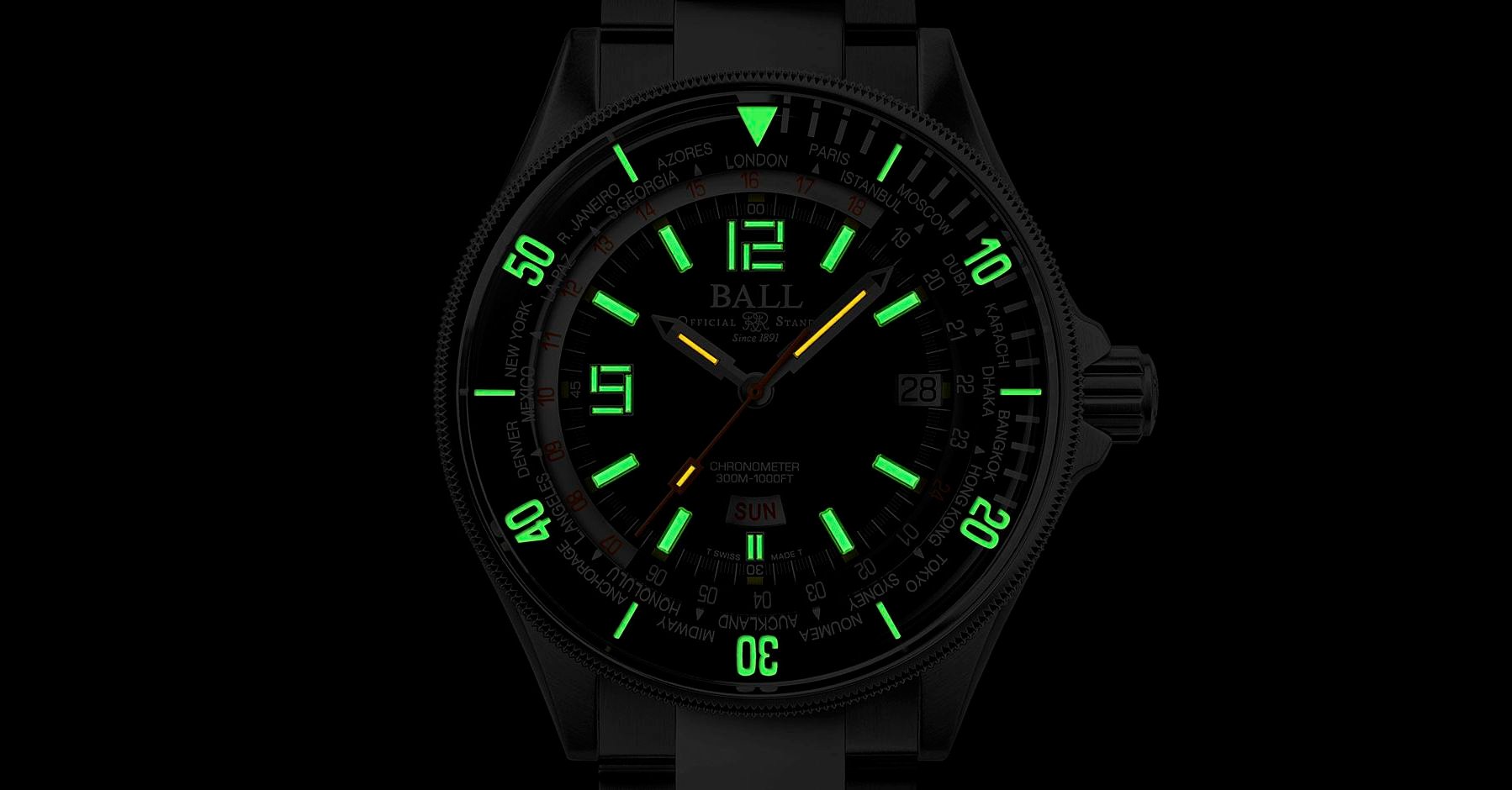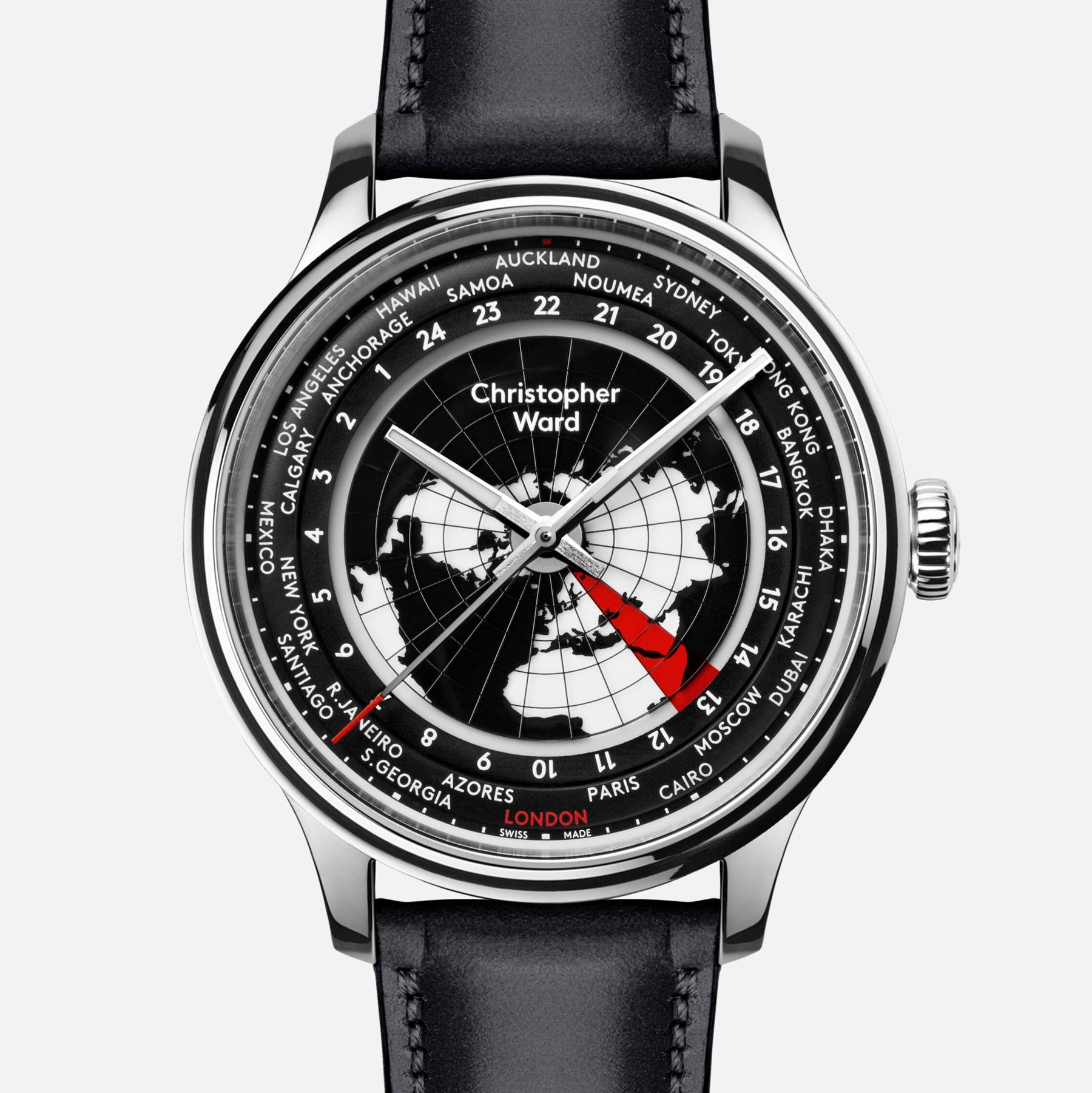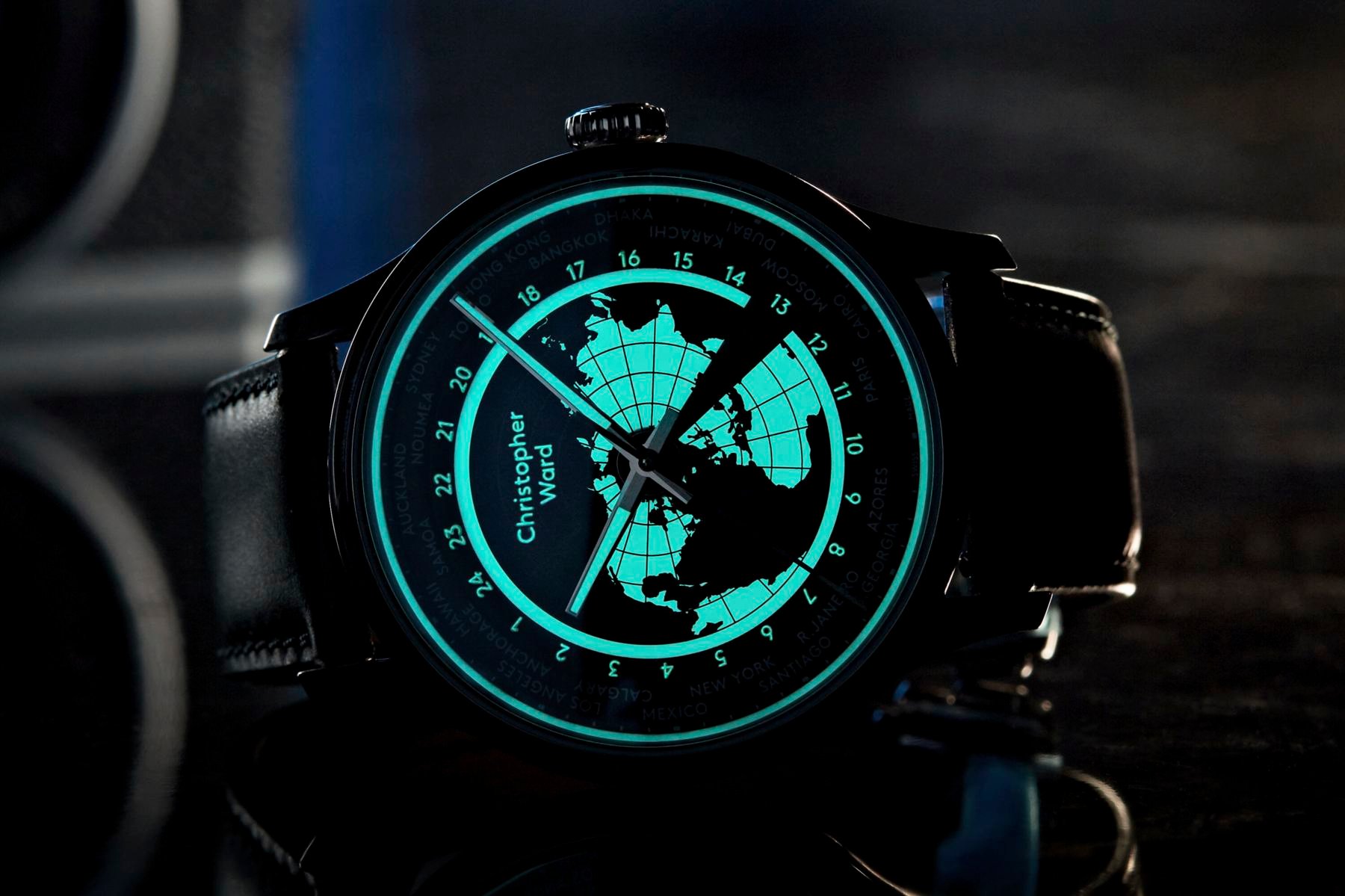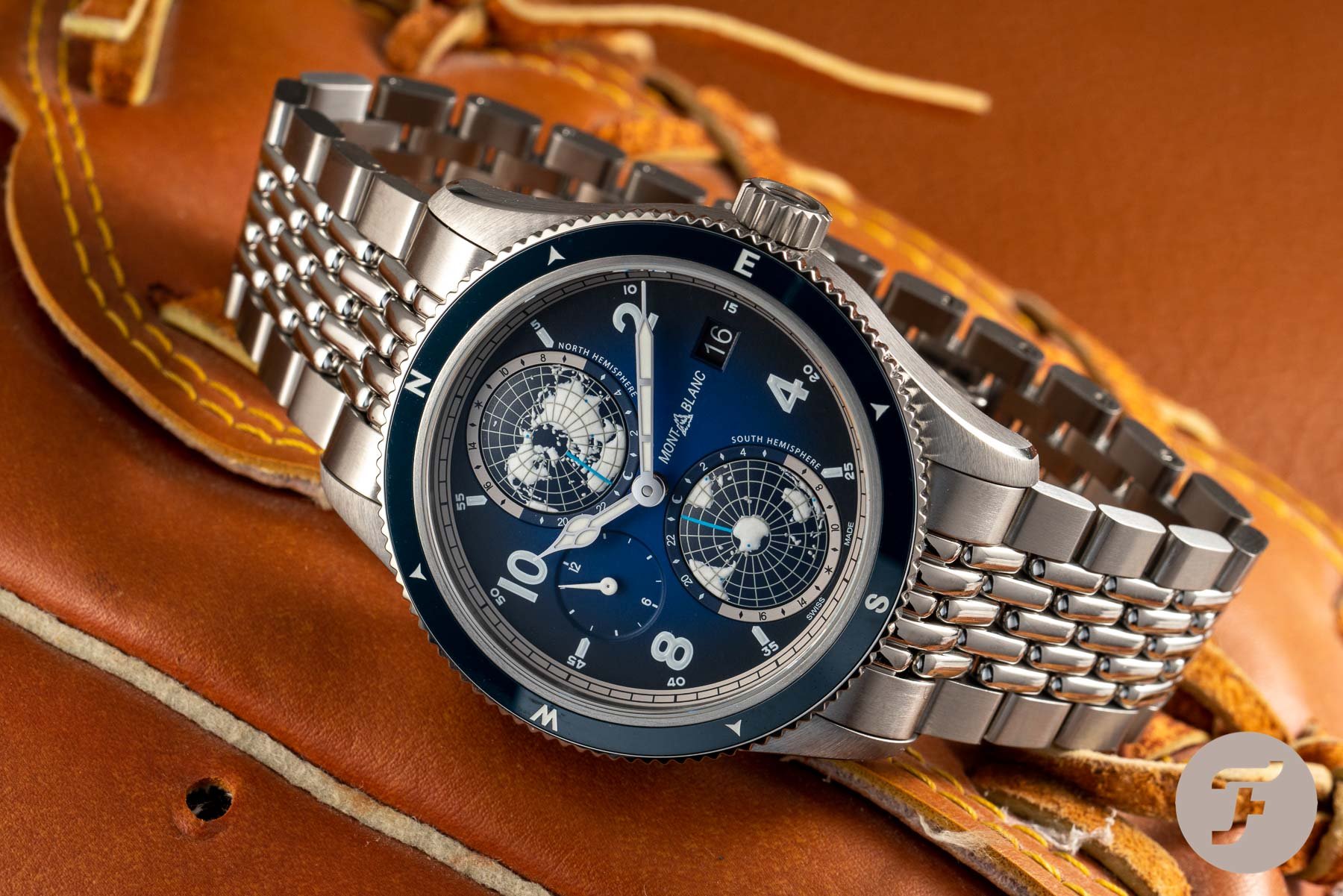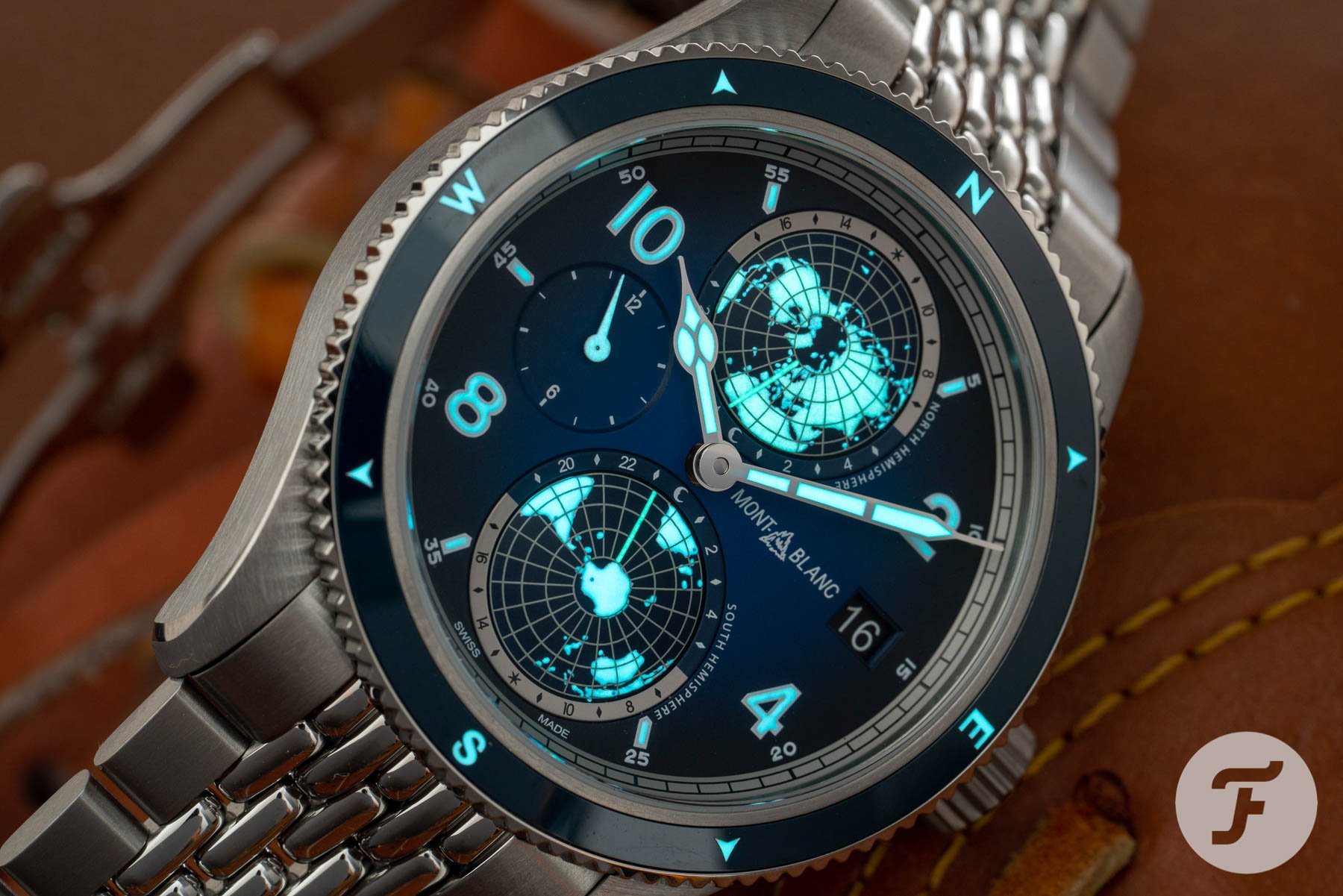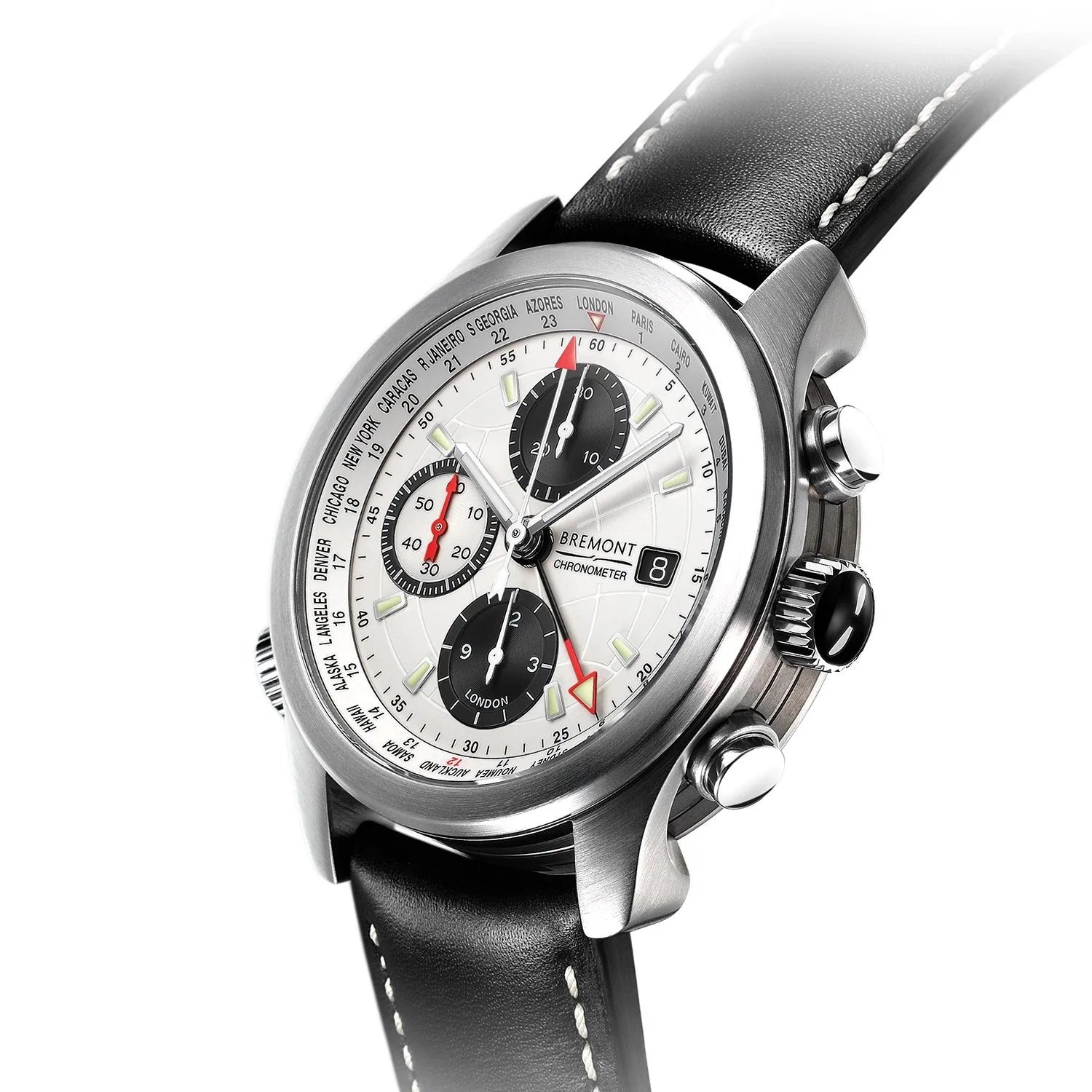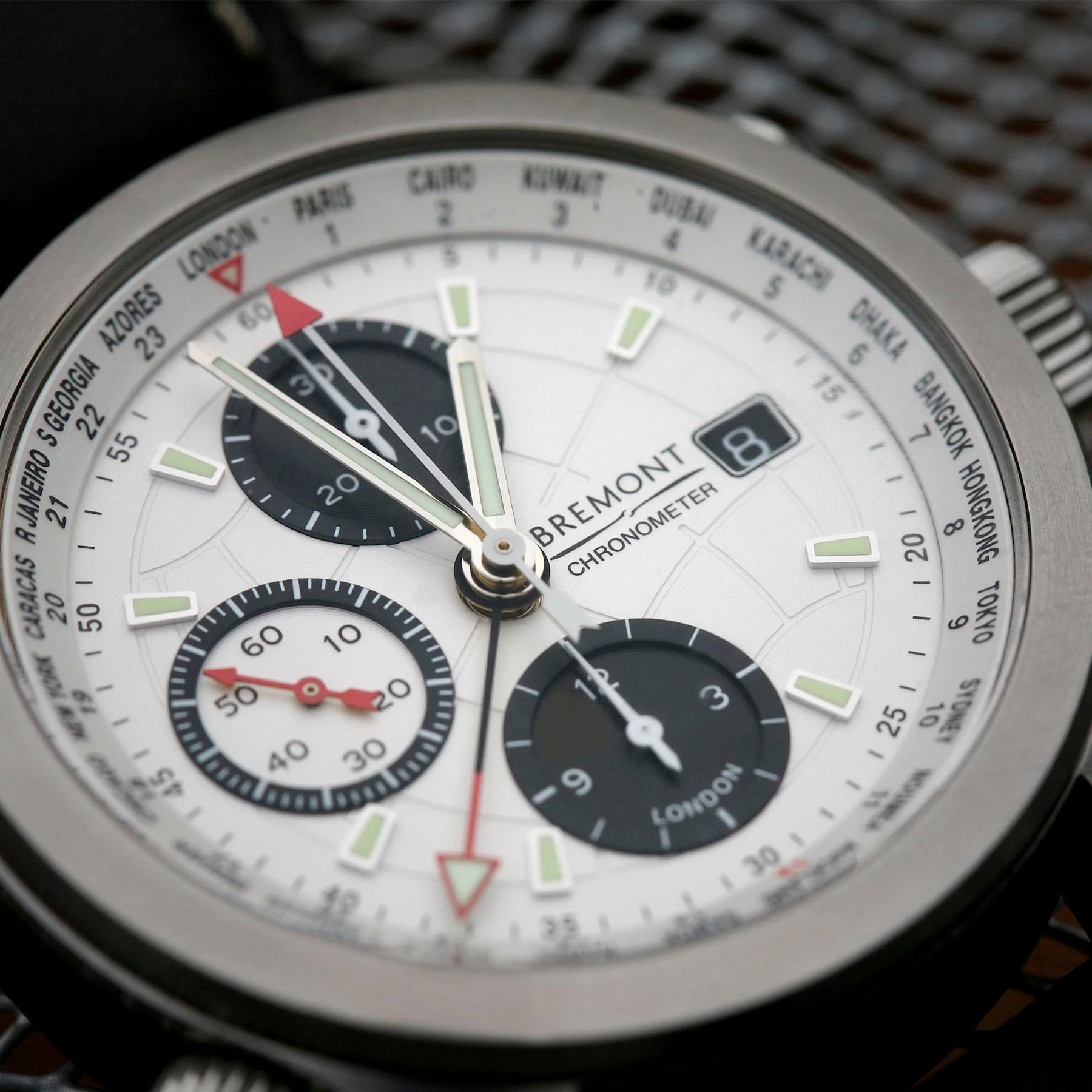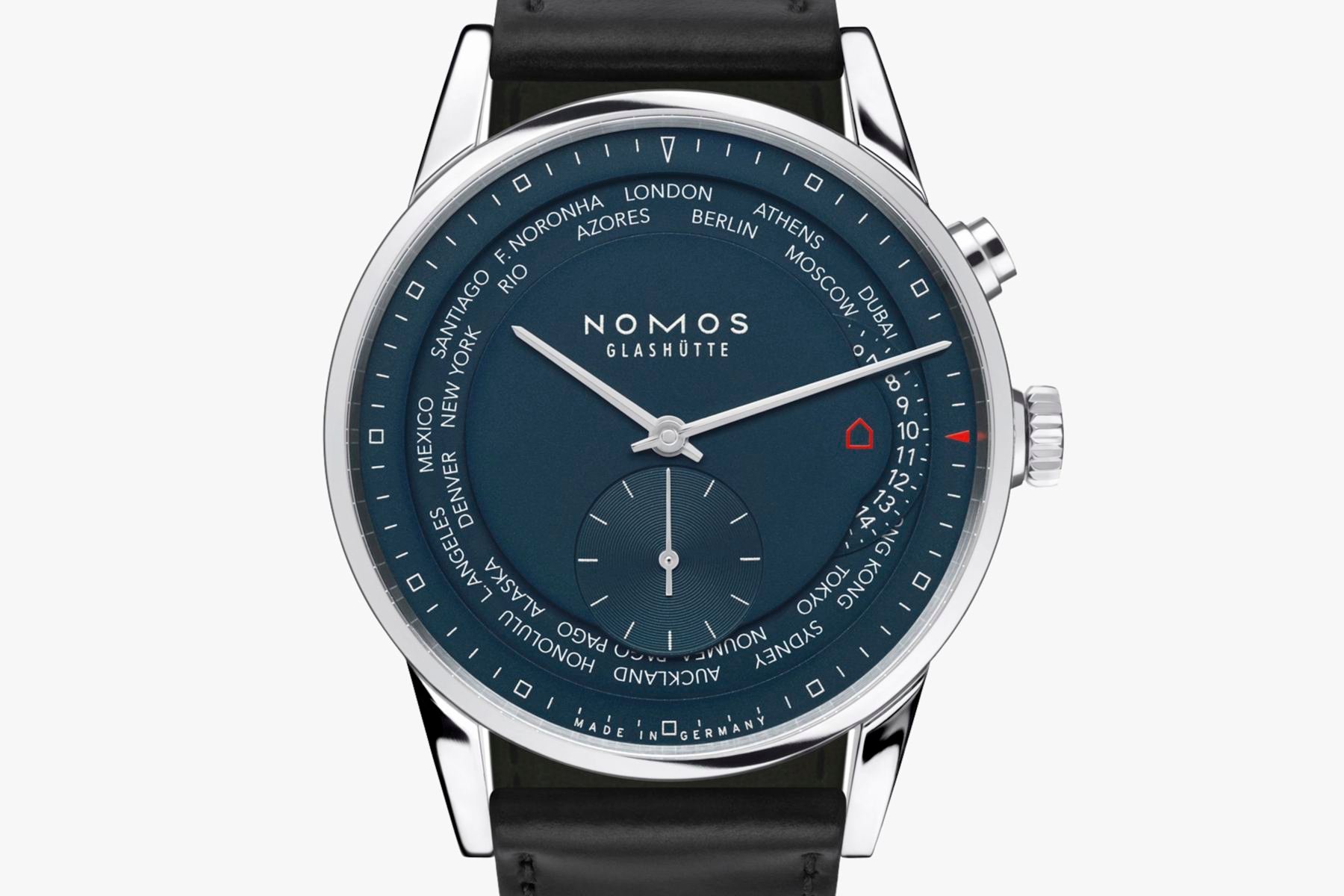The World (Time) In Your Palm: Unique World Timers By Ball, Montblanc, And More
World time watches are a relatively young addition to horology. Invented by Louis Cottier in 1931, the complication doesn’t have quite the longevity as, say, the chronograph or calendar. But in the less than 100 years since its birth, the world timer has undergone quite a bit of creative modification, more so in recent years. It’s a design premise that has real-world use, and once the general concept entered the collective imagination of watchmakers, the sky became the limit on unique ways to display this information. Ball, Christopher Ward, Montblanc, Bremont, and NOMOS Glashütte show us that there’s no one way to do world time.
The world time complication is a fairly straightforward concept. A list of 24 time zones, indicated by prominent cities within each, corresponds to a rotating ring marked with each of the 24 hours in a full daily cycle. As the numbered ring rotates, each number lines up with a city, indicating the time of the hour in each time zone. At a glance, one can know the time in any area of the world, give or take some technicalities. (India, for example, exists at GMT+5:30, not on the hour.) Traditionally, world timers displayed the information exactly as described, giving us the recognizable gold watches of last century with a painted globe on the dial. Lately, however, creativity has unleashed many new world time watches that break the mold. Better yet, they don’t cost as much as a nice car.
Ball Engineer Master II Diver Worldtime
Ball comes closer than any other on this list to the traditional world timer in functionality. That’s surprising since, at first glance, one might not know what they’re looking at. Is the Engineer Master II Diver Worldtime a true dive watch? Well, yes. That bezel you see is a uni-directional dive bezel — with some extras. Because nestled underneath the bold numbers of the diver’s count-up are the names of cities from 24 time zones. That’s where the bezel ends. But there’s almost no visual break between the cities on the bezel and the inner rotating 24-hour ring on the dial because the entire bezel, excluding the perimeter coin-edge ring with which to turn it, is internal.
The Master II Diver Worldtime (ref. DG2232A-SC-BK) is a fun break from typical internal bezels which require an additional crown to rotate. Ball presents the best of both worlds with easy tactile manipulation and a seamless transition from bezel to dial. Everything within the 24-hour ring is (official) standard Ball. Tritium-lumed indices and hands mark the time. There’s a day window at 6 o’clock and a date at 3 o’clock. Water resistance on the stainless steel case and sapphire crystal combo is a solid 300 meters. If you know anything about Ball, you’ll recognize that this is a hard-working dive watch for the world traveler.
The movement is no slouch either. Ball’s RR1501-C Caliber is a modified ETA 2836-2 base adjusted to COSC specs. The power reserve is an expected 38 hours given the architecture. The steel case housing the movement and fun combination of functions is an approachable 42mm in diameter and 14.4mm in height. For €3,316 on a matching steel bracelet, one can have a robust under-the-radar world time dive watch, even if it won’t fit under a cuff.
Tritium also fully illuminates the numbers on the dive bezel from below. Exempt from illumination, unfortunately, is the world time indication. That slack is enthusiastically picked up by the aptly named Christopher Ward C1 Worldglow.
Christopher Ward C1 Worldglow
Like Ball, but in a different vein, Christopher Ward is becoming known for radical watch illumination. After first releasing the C1 Moonglow with two massive glowing moons beneath a tinted sapphire dial, Christopher Ward is back, this time looking earthward. Following the Moonglow, the C1 Worldglow does not disappoint.
Visually, the C1 Worldglow comes closer to traditional world timers than any other on this list. A white earth, viewed from the North Pole, occupies the dial. Longitude lines emanate out from the pole, dividing the globe up into 24 segments. The cities listed around the outer ring correspond to each longitude segment. Each city exists geographically within each segment.
The C1 Worldglow is a true world timer, like the Ball. Powering the Worldglow is Christopher Ward’s JJ03 caliber with 42 hours of power reserve, which is a modified Sellita SW330, a common caliber for world timers. Where the JJ03 primarily differs from the SW330 is in one added perk. Visible on the Worldglow’s dial is a red section that takes up a single longitudinal segment. The JJ03 lets the user set this segment — which the brand calls the “city-selector” — to any of the 24 time zones. This provides a visual cue for quick reference of any given time zone, adding a targeted GMT functionality with a seemingly simple hack.
Gotta glow!
I say “seemingly” because, to achieve this effect and keep the dial looking so clean, Christopher Ward uses four sandwiched layers to make the dial. And what a dial it is. The crisp, clean white-and-black motif with red accents imparts a refined sporty feel. But it’s in the dark that the Worldglow really shines… or glows.
True to its name, the world on the dial is aggressively lumed, as are the numbers on the rotating 24-hour ring. If you ever needed to know the time in multiple time zones in the dark, the C1 Worldglow is the watch for you. Absent from illumination are the city names around the perimeter, but using the visual aid of the Northern Hemisphere, I imagine it wouldn’t take long before reading it to become second nature.
Christopher Ward opted for a larger case size, presumably to show off the awesome visual design. At 43mm in diameter and 12mm tall, it certainly is a bit big. But the lug-to-lug is only 51mm, and the stainless steel case is a simple, classy number that works to visually diminish its size further. With only 30 meters of water resistance, no one is going to be diving in this world timer, though. It costs €2,350 on a padded black leather strap.
Montblanc 1858 Geosphere
If you like globe motifs on a watch but want to get it wet, Montblanc’s 1858 Geosphere (ref. MB125567) is a prime candidate. In fact, Montblanc has doubled the globe fun, presenting both the northern and southern hemispheres at 12 o’clock and 6 o’clock, respectively. Some might argue this isn’t a true world timer, as the ability to read the time in different time zones is diminished with the smaller sub-dials and lack of city names that necessitate knowledge of world geography. I say if you can quickly and relatively easily read the time in almost any time zone (even if dependent upon your geography skills), it’s a world time watch.
For a 41mm case size, Montblanc packs just about as much information as possible before crossing the “cluttered” line. Each of the hemispheres rotates (in opposite directions to accurately depict Earth’s rotation) against surrounding 24-hour scales. At 9 o’clock is a second time zone hour indicator, adding a GMT functionality (not unlike the C1 Worldglow). The date is at 3 o’clock. Then there’s a rotating compass bezel, which is more novelty to me than anything functional. What is missing, interestingly, is a seconds hand. I think it’s a bold move, but I welcome it. In measuring the rotations of hemispheres, seconds are a forgettable detail.
Thankfully, Montblanc doesn’t skimp on the lume either. Excluding the date, anything that imparts information is fully lumed, including the hemispheres. It’s when the halves of the Earth are glowing that seven little un-lumed dots become apparent. These mark the locations of the highest mountain peak on each continent, including Antarctica. If you’ve forgotten what they are, they’re conveniently listed on the engraved case back.
1858 Geosphere Specs
Montblanc’s MB 29.25 caliber powers everything, providing a 42-hour power reserve. For such a relatively complex approach to world time, it’s interesting that Montblanc opted for a simple Sellita SW300 base. The complications are modules sitting above the base SW300’s relatively thin height. Overall, the 1958 Geosphere’s height is only 12.8mm. Conservative dimensions (for a tool-watch-oriented aesthetic) and the use of titanium for the case make for a complex, capable watch that weighs half what it should. Water resistance is a hardy 100 meters, perfect for this overland world-adventure watch. At €6,000 on a steel and titanium bracelet, it’s the most expensive watch on this list, but the unique engineering and aesthetics measure up in my opinion.
Bremont ALT1-WT
Bremont rounds out our world time tool-watch trio with a world timer chronograph meant for the skies. The ALT1-WT is a civilian interpretation of the military watch that Bremont supplies to the C-17 Globemaster crew. Chronograph and GMT unite in a classy yet capable pilot’s watch. We have now thoroughly entered GMT territory with no rotating 24-hour rings or globes to be seen. However, Bremont makes use of a clever inner rotating bezel to quickly determine what time it is around the world.
Opposite the expected dual chronograph pushers and standard crown on the other side, an additional crown sits at 8 o’clock. This rotates the inner bezel, which clicks into place for accuracy as it turns. The bezel is marked with the 24 world cities expected of a world timer. Present too are numbers from “1” to “24” beneath each city starting at Paris, one zone away from London (and Greenwich Mean Time). The ALT1-WT’s 24-hour GMT hand is set to the correct time for whichever city on the bezel is at 12 o’clock. From there, the bezel can be rotated. The GMT hand then points to the correct time for whichever city currently occupies high noon on the watch.
It’s an ingenious use of a bezel, and I’m surprised to have only encountered it with Bremont. The bulk of the dial, which would’ve been occupied with a full world time complication, can now be used for, say, a 12-hour chronograph. In this case, that’s exactly what Bremont did. When not in use, the tip of the chronograph seconds hand has the double duty of clearly pointing to the city for which the GMT hand indicates the hour.
ALT1-WT Specs
Bremont’s modified BE-54AE caliber is the engine driving everything. The BE-54AE itself is a modified ETA 7750 base. With the bezel doing all the heavy lifting, there’s nothing too magical about the caliber. It has a 42-hour power reserve, interestingly two hours less than the base ETA. However, it is adjusted to within chronometer specs.
The case, however, is something special. Bremont’s Trip-Tick case is of the brand’s unique design DNA and incorporates three primary pieces. A cylindrical mid-case joins the bezel plus lugs to the case back. For the ALT1-WT, hardened steel is used with a scratch-resistant DLC coating on the mid-case. The ALT1-WT is a big watch at 43mm in diameter and 16mm thick, but those dimensions aren’t out of place on a modern-day military pilot’s watch, which is where the ALT1-WT comes from. It is €5,285 on a black leather strap. One hundred meters of water resistance solidify its place as a true tool watch, good as it looks in panda livery.
NOMOS Glashütte Zürich World Time
The Zürich World Time (ref. 807) from NOMOS Glashütte has to be the best-looking watch on this list — if you like Bauhaus design. Gone are the bezels, glowing globes, and date windows. The designers at NOMOS set out to make their best version of a world timer, and that’s exactly what they achieved. The Zürich World Time is quite a favorite here at Fratello, and that’s in part due to its excellent design.
The layout of information is simple, even if not immediately intuitive. The small 24-hour wheel at 3 o’clock indicates the wearer’s home time. This is cheekily emphasized by the little red house outline. The hour hand displays the local time. Rather, it displays the time indicated by the city at 12 o’clock. Sound familiar? NOMOS took a step towards the complex, forgoing a simple rotating bezel for push-button actuation. The button at 2 o’clock advances the cities of the city ring one step per press. Correspondingly, the hour hand jumps to display the new time zone. With less than 24 presses, one can know the current time in most places in the world (apart from time zones with half-hour and 45-minute offsets). This makes the NOMOS Zürich a functional, albeit unorthodox, world timer.
Good design, inside and out
The complexity of the mechanics leads to an elegantly simple user experience, as any good design should. NOMOS’s in-house caliber DUW 5201 makes it happen. The DUW 5201 is an automatic movement, and a 42-hour power reserve places it equally among the competition.
There’s no lume to speak of. Water resistance is a splash-proof 3 ATM. But bemoaning the lack of those elements misses the point. What the 40mm Zürich gives you is an incredibly refined piece of wristwear for the astute enthusiast and businessperson alike. This watch — at only 11mm in height — will fit under a cuff, as intended. It also happens to be a lot of fun underneath that initial cool, Bauhaus exterior. For €4,620 on a Horween Shell Cordovan strap, the Zürich World Time is not cheap. But an independent in-house and prestigious design language say it’s worth it.
World time all the time!
Five watches, each radically different and unique, but all world timers — which would you choose? What other unique world time watches should we know about? Let us know in the comments. More information about Ball, Christopher Ward, Montblanc, Bremont, and NOMOS Glashütte and their unique world timers can be found on their official websites.
Cover image is of the Fratello× NOMOS Glashütte Zürich Weltzeit “The Hague” Limited Edition

